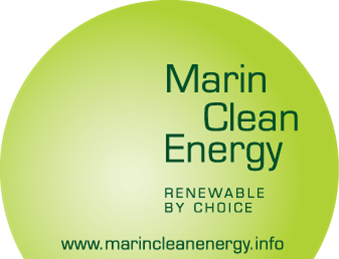Just in time for Earth Day, a renewed effort to reduce the city’s carbon emissions was introduced at the Board of Supervisors yesterday [Tues/22]. Sup. John Avalos introduced a resolution calling for a study of San Francisco joining Marin Clean Energy, which provides renewable energy to that county’s residents.
The move is seen largely as an effort to circumvent Mayor Ed Lee’s opposition to implementing a controversial renewable energy plan called CleanPowerSF.
“Mayor Lee and the Public Utilities Commission objected to CleanPowerSF, but they have offered no other solution to provide San Franciscans with 100 percent renewable electricity,” Avalos said in a public statement. “With this ordinance, we can either join Marin or we can implement our own program, but we can no longer afford to do nothing.”
The resolution is the latest effort in the long saga to implement CleanPowerSF, San Francisco’s proposed renewable energy alternative to PG&E, whose current energy mix is only 19 percent renewable. Much of PG&E’s current mix is dirty and directly contributes to half of San Francisco’s carbon footprint, according to the city’s own recent Climate Action Strategy.
Joining Marin under a Joint Powers Authority would provide a vehicle for San Francisco to enact CleanPowerSF’s goals, long blocked by the mayor. San Francisco’s renewable energy effort may have lingered in legal limbo for years, but Marin made the switch to renewables in 2010.
“It’s something people want, and it also reduces greenhouse gas emissions,” Marin Clean Energy Executive Officer Dawn Weisz told the Guardian. Much of Northern California, she noted, has little choice but to use PG&E for their electricity.
“The people never chose to have a monopoly in place,” she said. “People like having choices.”
Marin chose to switch to renewable energy in 2010, and MCE offers two energy mix options: A 100 percent renewable energy option, and a less expensive 50 percent renewable option. MCE officials told the Guardian they have a 75 percent customer adoption rate, meaning most of Marin County is running on clean, renewable energy.
Using an energy bill calculator on MCE’s website, the average homeowner pays about $80 a month for their renewable energy in the summer, just $2 more than their dirty PG&E power. The program has been so successful for MCE’s approximately 125,000 customers that other cities have joined with Marin under what is called a Joint Powers Authority, allowing those cities to access MCE’s grid.
The City of Richmond joined into a Joint Powers Authority with Marin County in 2012, and Napa County also expressed interest in providing renewable energy through MCE. That large adoption rate may be what has PG&E running scared.
“We faced very strong opposition from the incumbent utility during our launch,” Weisz told the Guardian, referring to PG&E. “Fortunately, we have a much better relationship with them now, and they serve as a good partner.”
The renewable energy is distributed along PG&E’s existing infrastructure, so the utility still has a role to play in providing electricity to Marin. But the utility certainly has worries when it comes to generating electricity, as Marin is building new sources of renewable energy up and down California.
“We have 24 different power supply contracts,” Weisz told us. This includes new solar facilities in San Rafael and the Central Valley, and renewable energy sources in Roseville and and Placer County.
Though other cities have signed on to receive energy through Marin County’s MCE program, San Francisco joining would be another ballgame entirely, Weisz said.
MCE has a policy of incremental expansion, she told us, and defines potential affiliate cities and counties as having fewer than 30,000 customers who are less than 30 miles away. Though San Francisco is a stone’s throw from Marin County, the potential customer base is huge: San Francisco has a population of over 800,000 people.
“It would require some analysis,” Wisz said dryly.
MCE’s analysis to include Napa County in its energy mix took 60 days, she said. Notably, San Francisco may produce its own power and use its own mix, and simply use MCE’s billing setup. Basically, San Francisco would provide energy through CleanPowerSF, but MCE would be a contractor that administers San Francisco’s program.
But joining into Marin’s renewable energy program has more hurdles than just figuring out the mix. Clean Power SF is a Community Choice Aggregation program, defined by state law as exactly that — part of the community. Jumping over to Marin may create a legal mess for San Francisco, but there is hope.
Assembly Bill 2159, introduced by Assemblyman Tom Ammiano, would allow a county’s Board of Supervisors to approve joining a Joint Powers Authority with another municipality, in this case, allowing San Francisco to join up with Marin, while still creating its own CCA program.
The bill just cleared the Assembly Utilities and Commerce Committee yesterday, and has a ways to go.
If that sounds like a legal headache, it is. But advocates say its necessary because Mayor Ed Lee has “stacked the deck” at the San Francisco Public Utilities Commission, hiring people friendly to blocking CleanPowerSF on his behalf.
“The main purpose of passing it is to get through the mayor’s log jam,” clean power advocate Eric Brooks told the Guardian. “We want San Francisco to go faster and make more green jobs.”
And, of course, to reduce greenhouse gas emissions. Avalos’ office estimates that in the time the mayor has stalled Clean Power SF, San Francisco has generated 80 million pounds of CO2.

